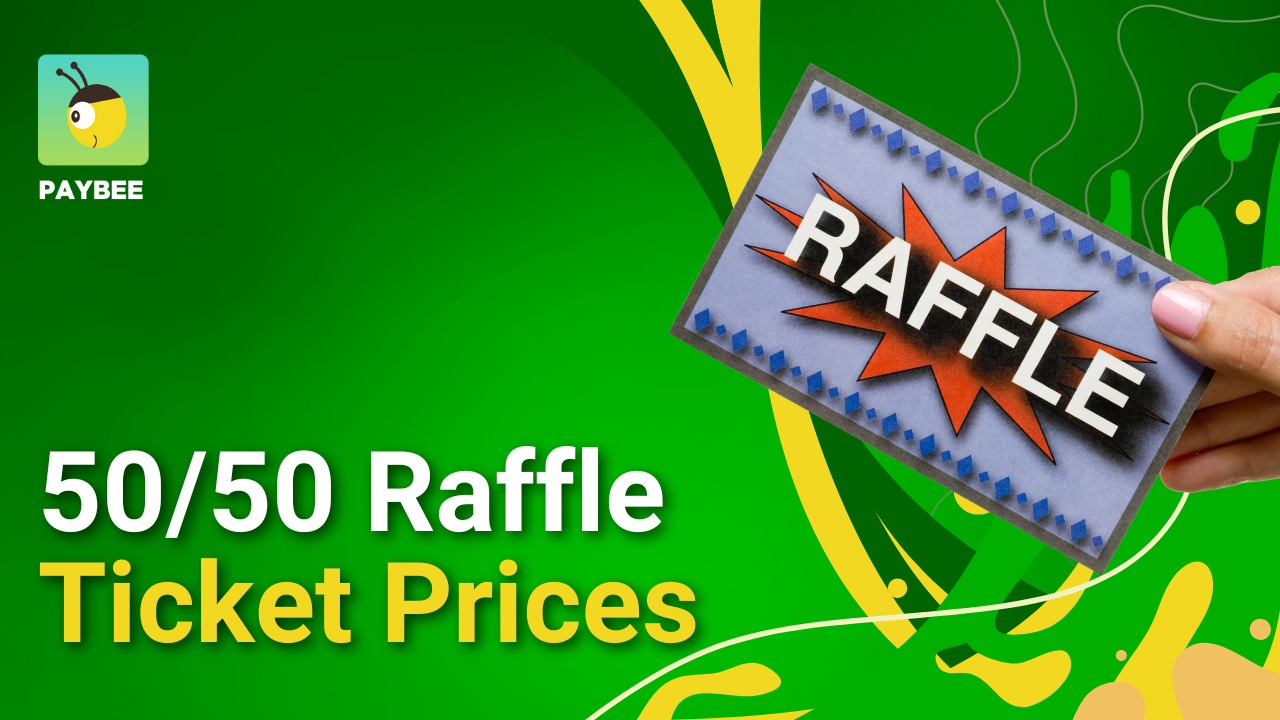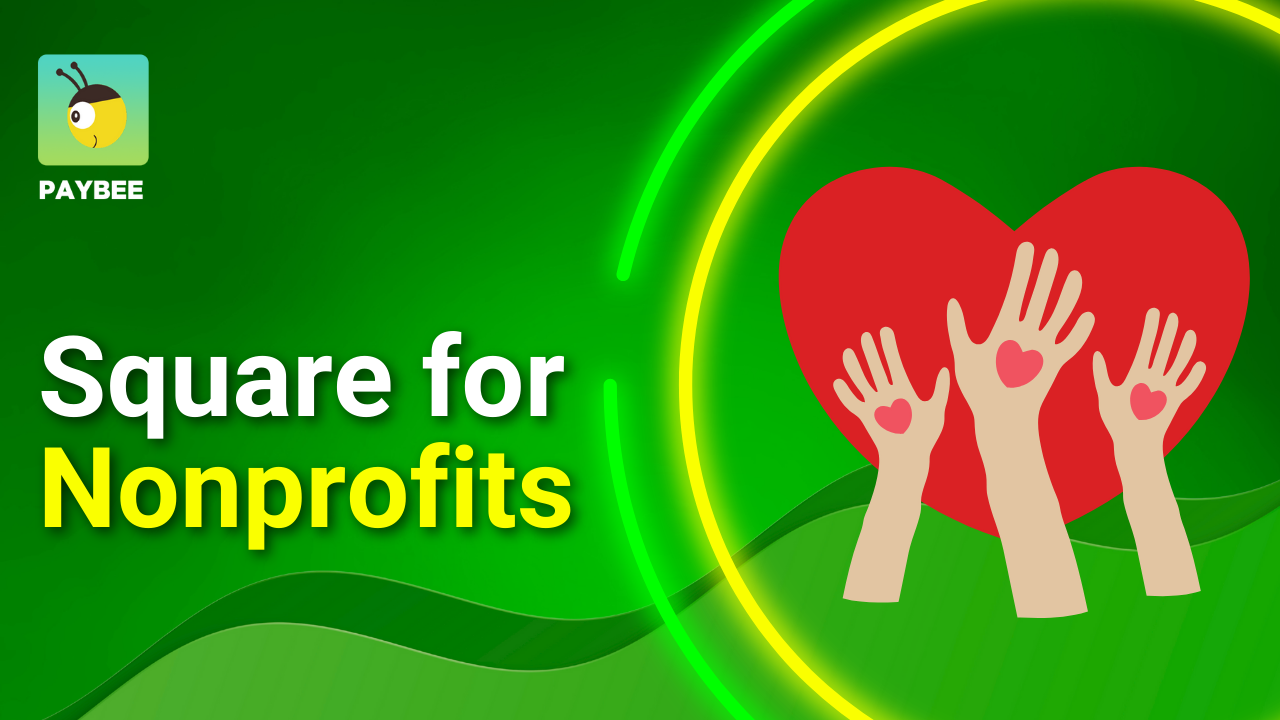
50/50 Raffle Ticket Prices That Get People Buying
50/50 Raffle Ticket Prices That Get People Buying
What a 50/50 Raffle Really Costs and Why Ticket Pricing Makes or Breaks It
When the 50/50 raffle kicks off, that’s usually when the room wakes up. It’s easy to run, gets people talking, and keeps the energy going. With each and every ticket sold, the prize climbs higher and your cause earns more. The math is simple, but the ticket price is what makes it work.
These raffles work especially well when paired with larger events like galas, auctions, or community fundraisers. They add an extra layer of excitement and give guests one more reason to stay engaged. If you’re planning an event, Paybee is built to handle the rest, ticketing, check-in, donations, and reporting, all in one platform.
Pricing raffle tickets comes down to how people really buy. A one-dollar ticket feels easy and friendly, but that low price can hold you back if you’re trying to raise more. Go too high, though, and sales stall when the crowd feels stretched. The right number lands somewhere in between: where people keep buying and still feel good about it.
This guide takes a closer look at how 50/50 raffle ticket prices work and what really gets people to buy. It covers what drives your total, how to read the crowd in front of you, and how to price with purpose instead of guessing.
The Sweet Spot: Finding Ticket Prices That People Will Actually Pay
A 50/50 raffle runs on a simple idea. When raffle tickets are sold the money gets added to a shared pot that gets split in half: one half for the winner, the other for your organization. It’s quick to set up, easy to explain, and it keeps people interested because each sale changes the final outcome.
Here’s how it plays out. Tickets sell online, in person, or both. The total sales form the prize pool. When the draw happens, usually near the end of the event, half goes to the winning ticket holder and half stays with your cause. If your event brings in $1,000 in ticket sales, the winner gets $500 and your group keeps $500 to support the mission.
Ticket pricing has a direct impact on how big that prize gets. Lower prices attract more casual buyers, while higher ones depend on fewer people spending more. The best results come from a price that fits the crowd. Many organizers use bundle pricing like one ticket for $2, three for $5, or ten for $10. Simple options like tiered pricing give buyers a reason to grab a few more without feeling pushed.
What Shapes a Fair Ticket Price (and What Throws It Off)
Ticket prices do more than decide the payout. They shape how people join in, how much money comes through the door, and how connected everyone feels to what’s happening. Even a small change in price can shift turnout and energy.
A fair price keeps things moving. People buy early, sales stay steady, and volunteers can see what’s working. Bundles help too. Offering a few extra tickets for a small bump in price adds up fast without feeling like a push. Since there’s no prize to buy, nearly every dollar goes straight to the cause.
Pricing also changes the mood in the room. As the pot grows, people talk about it, check back in, and stay involved. That buzz keeps the night going and builds momentum for the next event. When a raffle feels fair and runs clean, it earns trust, and that’s what keeps people coming back.
Smart pricing isn’t about copying what someone else did. It’s about reading your crowd and finding the number that fits them. Once you do, the tickets sell themselves.
Easy Ticket Pricing Tricks That Keep Sales Rolling
No two fundraisers bring in the same crowd, which makes pricing more of a judgment call than a formula. What works for a school event might not work at a gala or a charity run. The goal is to set a price that fits the people in the room, not just the type of event.
A few things help guide that number:
Audience and venue. A local event might do best with one-dollar tickets, while bigger fundraisers can often go with two or five. Know your crowd and set a number that feels comfortable.
Event length. A short, two-hour fundraiser needs lower prices to move tickets fast. Longer events can spread out sales with higher prices or ticket bundle deals.
Competition. If other groups nearby are running raffles, their prices create a baseline. You don’t need to match it exactly, a small difference helps yours stand out.
Economic climate. Donors notice when costs rise. A small, clearly explained price increase feels fairer than a jump that comes without context.
Good pricing comes down to what people value most: a fair shot, a little fun, and a clear reason to buy. When those things line up, participation follows naturally.
The Price of 2025: Where Raffle Tickets Are Heading Next
Raffles move faster now. Most people buy straight from their phones, skip the paper tickets, and like seeing totals climb in real time. It’s a small shift that’s changed how organizers think about pricing.
Ticket prices themselves haven’t moved much. Most still land between one and five dollars. What’s different is how those tickets reach buyers. A simple QR code or short link can bring in more sales than a full table if you play your cards, or tickets, right. When it’s easy to buy, even a low price keeps sales steady.
Here’s what’s showing up most right now:
Mobile first. Guests scan, pay, and get back to the event without standing in line.
One clear price. Keeping the same price online and in person keeps things smooth.
Less paper. Digital tracking replaces printed rolls and saves time and setup.
Live totals. Watching the pot grow keeps people interested longer than reminders ever could.
These changes aren’t really about raising or lowering the price. They’re about how people buy. Keep it simple, make it quick, and buyers keep coming.
When Ticket Pricing Trips You Up… and How to Fix It Fast
Running a 50-50 raffle looks simple until the details start to pile up. Pricing, timing, and local rules can all trip you up if they’re not handled early. Most of the problems fundraisers run into are easy to fix once you know what to watch for.
Your Go-To Tech and Tools for Raffle Ticket Sales
Good pricing takes planning, but keeping it running smoothly during an event takes the right setup. Even small raffles go better when sales, tracking, and payouts stay organized from the start.
Most fundraisers use a mix of tools to keep things steady. The setup depends on the size of the event and who’s handling it. A spreadsheet might do the job for a small school raffle, but once the crowd gets bigger, a few digital tools that track payments and totals automatically can save a lot of time.
Here are a few that make life easier:
Online ticketing platforms. Platforms like Eventbrite keep ticket sales and payments in one place so you can focus on the event, not the paperwork.
Mobile payment apps. Venmo, Square, or Apple Pay let volunteers take quick payments from a phone or tablet. It’s simple and keeps the line moving.
Donation or event management software. If your raffle’s part of a bigger event, these systems help you roll those totals into your main fundraising report.
Post-event reporting tools. Post-event reporting tools help you check what sold best and when. Those notes help shape better pricing for next time.
Any setup works as long as you can see what’s coming in and where it’s going. Keep it simple, keep it clean, and the night runs smoother for everyone.
If you’re looking for a fundraising platform that brings ticketing, payments, check-in, and reporting together in one place, Paybee can handle it all for in-person, virtual, or hybrid events.
Set Fair Ticket Prices. Build Trust. Raise More.
Setting the right 50/50 raffle ticket price isn’t luck. It comes from paying attention to the details, knowing your crowd, and building a plan that fits the size of your event. The price on that ticket touches everything: how many people join in, how often they buy, and how much energy fills the room.
Most organizers learn that success doesn’t hinge on one big decision. It builds from the small ones. Prices that feel fair. Bundles that make sense. Updates that keep people interested. When those parts work together, participation comes naturally and the total often ends up higher than expected.
Good pricing also builds trust. A raffle that’s clear, fair, and well run keeps people coming back. They remember how it felt to take part, not just who won. Over time, that steady experience becomes your reputation, and that’s what keeps supporters loyal.
If you’re setting up a 50/50 raffle for the first time, start simple and pay attention to what works. If you’ve done it before, use what you’ve learned to test something small: a slightly different price, a cleaner bundle, or better updates on the prize total. Real improvement comes from small steps.
Today’s tools make that easier. Digital platforms that manage ticketing, payments, and reports help organizers focus on the event itself. Fundraisers that keep up with how people actually buy always have an edge, no matter what year it is.
However you run your next raffle, keep it simple, fair, and consistent. That mix turns a good idea into a reliable fundraiser people remember long after the final ticket’s drawn.
When it’s time to organize your next event, Paybee keeps everything in sync. Contact us today to find out how you can pollinate goodness with our all-in-one fundraising platform and make your next 50/50 raffle a success.
Resources :
- Tax-Exempt Organizations and Raffle Prizes
- Games of Chance, Raffles, and Charity Auctions
- Fundraising for Your Favorite Cause? Know the Ethics Rules Before You Do.
Start Fundraising






